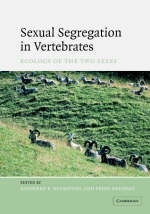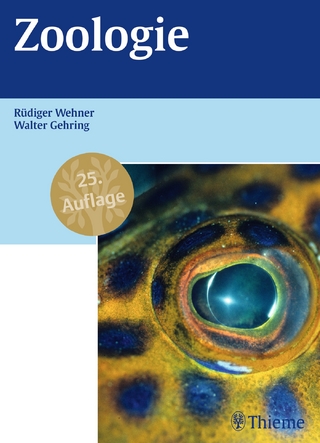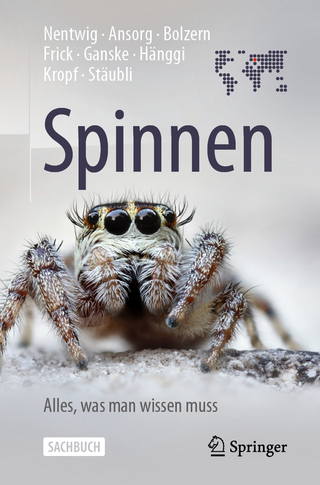
Sexual Segregation in Vertebrates
Cambridge University Press (Verlag)
978-0-521-83522-0 (ISBN)
Males and females often differ in developmental patterns, adult morphology, ecology and behaviour, and in many mammals males are often larger. Size dimorphism results in divergent nutritional and energetic requirements or reproductive strategies by the sexes, which in turn sometimes causes them to select different forage, use different habitats, and express differing social affinities. Such divergent life-styles often lead males and females to live large parts of their lives separately. Sexual segregation is widespread in animals. Males and females may share the same habitat, but at different times, for example, or they might use different habitats entirely. Why did sexual segregation evolve and what factors contribute to it? Sexual Segregation in Vertebrates explores these questions by looking at a wide range of vertebrates and is aimed as a synthesis of our current understanding and a guide for future research.
Dr Ruckstuhl is currently Assistant Professor at the University of Calgary, Ecology division, in the Department of Biological Sciences. Dr Neuhaus is part time Research Assistant at the University of Neuhatel, and Professor at the University of Calgary.
Preface; Part I. Overview: 1. Sexual segregation and the ecology of the two sexes Kathreen E. Ruckstuhl and Tim H. Clutton-Brock; Part II. Concepts and Methodology: 2. Definitions, hypotheses, models and measures in the study of animal segregation Larissa Conradt; Part III. Foraging Ecology: 3. Sex differences in the foraging ecology of large mammalian herbivores Johan T. du Toit; 4. Sexual segregation in seals Ian J. Staniland; 5. Sexual differences in foraging behaviour and diets: a case-study of wandering albatrosses Jose C. Xavier and John P. Croxall; 6. Differences in foraging behaviour and feeding ecology in giant petrels Jacob Gonzáles-Solís and John P. Croxall; Part IV. Predator Avoidance and Reproductive Strategies: 7. Predation risk as a driving factor for size assortative shoaling and its implications for sexual segregation in fish Darren P. Croft, Jens Krause and Richard James; 8. Differences in habitat selection and reproductive strategies of male and female sharks David W. Sims; 9. Sex differences in reproductive strategies affect habitat choice in ungulates Martin B. Main and Johan T. du Toit; Part V. Sex-related Activities and Social Factors: 10. Activity asynchrony and social segregation Kathreen E. Ruckstuhl and Peter Neuhaus; 11. Sexual segregation in ungulates: from individual mechanisms to collective patterns Richard Bon, Jean-Louis Deneubourg, Jean-François Gerard and Pablo Michelena; 12. Sexual segregation in humans Anthony D. Pellegrini, Jeffrey D. Long and Elizabeth A. Mizerek; Part VI. Sexual Differences in Ecology: Comparisons within Different Taxa: 13. Ecological divergence between the sexes in reptiles Richard Shine and Mike Wall; 14. Sexual segregation in Australian marsupials Abigail M. MacFarlane and Graeme Coulson; 15. Social systems and ecology of bats John D. Altringham and Paula Senior; 16. Sociality and ecology of the odontocetes Robert Michaud; 17. Sexual segregation in non-human primates David P. Watts; Part VII. Implications for Conservation: 18. Sexual segregation in birds: patterns, processes and implications for conservation Paulo Catry, Richard A. Phillips and John P. Croxal; 19. Sexual segregation: a necessary consideration in wildlife conservation Esther S. Rubin and Vernon C. Bleich; Part VIII. Outlook: 20. Conclusions and future directions Peter Neuhaus, Kathreen E. Ruckstuhl and Larissa Conradt; References; Index.
| Erscheint lt. Verlag | 5.1.2006 |
|---|---|
| Verlagsort | Cambridge |
| Sprache | englisch |
| Maße | 152 x 229 mm |
| Gewicht | 924 g |
| Themenwelt | Naturwissenschaften ► Biologie ► Zoologie |
| ISBN-10 | 0-521-83522-4 / 0521835224 |
| ISBN-13 | 978-0-521-83522-0 / 9780521835220 |
| Zustand | Neuware |
| Haben Sie eine Frage zum Produkt? |
aus dem Bereich


